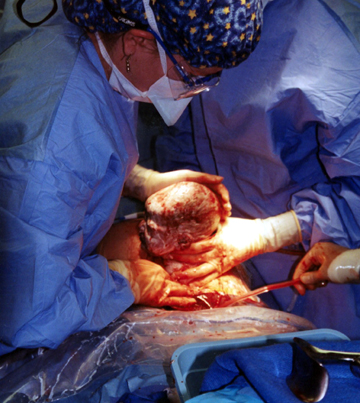Michael Fumento
Factual · Powerful · Original · Iconoclastic
Ill-Gotten Gains Keep Edwards Smiling
August 02, 2004 · Michael Fumento · Tech Central Station · Government
Why is Edwards always smiling? Lots of money and no conscience.
Everyone knows a Kerry-Edwards win means higher taxes. Few know that half the ticket has already helped raise our medical premiums. You see, while Kerry made his fortune the double old-fashioned way by first inheriting it and then marrying it, his grinning running mate was piling up a Mt. McKinley of cash from medical lawsuits. Further, his favorite weapon was what’s known in the science community as "a bunch of hooey."
There’s no arguing with success. As a trial lawyer, John Edwards won at least 94 cases, according to Lawyers Weekly, of which 54 netted more than $1 million. Normally attorneys take a 40 percent cut of cases that go to trial. In his last year as a practicing attorney, 1997, he reported an adjusted gross income of $11.4 million.
Medical malpractice was his specialty, and he reportedly tried more than 60 such cases, winning more than $1 million in over half of those. Most involved Ob/gyns. Indeed, he was so feared, according to the Center for Public Integrity, that "that doctors would settle cases for millions of dollars rather than face him at trial."
Edwards’ specialty was cerebral palsy, a set of permanent conditions affecting control of movement and posture that usually appear at toddler stage. There is no cure, although a recent small clinical trial using umbilical cord stem cells produced stunning results. About 10,000 U.S. children are diagnosed with it yearly. Edwards would claim the disease developed because negligent doctors ignored fetal heart monitors indicating the child might not be getting enough air during birth and thus failed to deliver it immediately through cesarean surgery.
Yet Edwards won his cases not because scientific evidence favored him but because of his smooth-talking "trust-me" demeanor – and heart-wrenching pleas in which he would sometimes pretend to be the voice of the unfortunate child crying out for justice.
It’s not considered impossible that asphyxiation during birth could cause cerebral palsy; just darned unlikely. United Cerebral Palsy lists 16 ways to help prevent the condition. Not one mentions the birthing procedure.
A study late last year evaluated almost 1,000 life births to see if cerebral palsy or other problems could by affected by type of birth. Conclusion: "Delivery mode (whether vaginal or cesarean delivery) was not associated with any of the outcomes that were evaluated."
Months earlier, another study observed that Cerebral palsy rates have shown "no change over 30 years" despite fetal monitoring and a huge increase in the number of C-sections. Further, "The prevalence of cerebral palsy is the same or lower in underdeveloped countries than in developed nations," even though "emergency cesarean delivery based on electronic monitor data is limited or absent."
Just this year, a review of all medical literature found that risk of any brain damage, including cerebral palsy, was less than 2 in 10,000 in the absence of genetic problems or those arising during pregnancy.
It’s not surprising, then, that the Michigan Supreme Court in July threw out a $21 million verdict from a 1997 case, ruling the jury had no basis for deciding that a doctor’s failure to perform a C-section caused a baby to develop cerebral palsy and other neurological problems.
Regardless of future court decisions, however, it remains that insurance companies have forked over massive payments to plaintiffs and their lawyers, then passed the costs on to doctors in malpractice fees. In one state, annual Ob/gyn malpractice premiums have reached $250,000.
Many doctors are fleeing the practice as fast as they can tie off that last umbilical cord. One in seven of fellows of the American College of Obstetricians and Gynecologists have quit obstetrics and many rural areas now have no such doctors.

Very few cesareans are medically necessary.
Meanwhile health insurance premiums have skyrocketed, in part because doctors don’t just absorb higher malpractice fees; they also pass them on.
Further, in what’s called "defensive medicine," lawsuit fears increased the number of "When in doubt, cut it out" C-sections. Cesareans had begun dropping in the late 1980s, going as low as 22 percent of deliveries. As Edwards and friends spread fear across the Ob/gyn land, rates began to climb again and are now about 27 percent.
There are probably many reasons for the increased popularity of C-sections, before and after the Edwards era. One is that women often choose it over the pain of labor, Dr. Bruce Flamm, clinical professor of Ob/gyn at UC Irvine told me. Still, "The biggest reason is probably the litigation issue" he said.
Unfortunately, "Cesarean birth carries greater risk for both the mother and the baby than a vaginal delivery," according to the March of Dimes. "Some of the increased risks for the mother include possible infection of the uterus and nearby pelvic organs; increased bleeding; blood clots in the legs, pelvic organs and sometimes the lungs; and, in very rare situations, death.
Further, cesarean birth "is more painful, is more expensive, and takes longer to recover from than a vaginal birth," says the group, while "Some health care experts believe that half of all C-sections performed in the U.S. are unnecessary." Except, perhaps, as protection against avaricious attorneys.
The official Democratic website describes Edwards as having represented "families and children hurt by the indifference and negligence of others." Actually he exploited these people, scared good doctors into other fields or retirement, and raised malpractice rates and health insurance premiums. We’ve already made Edwards filthy rich; we may as well vote for him.
